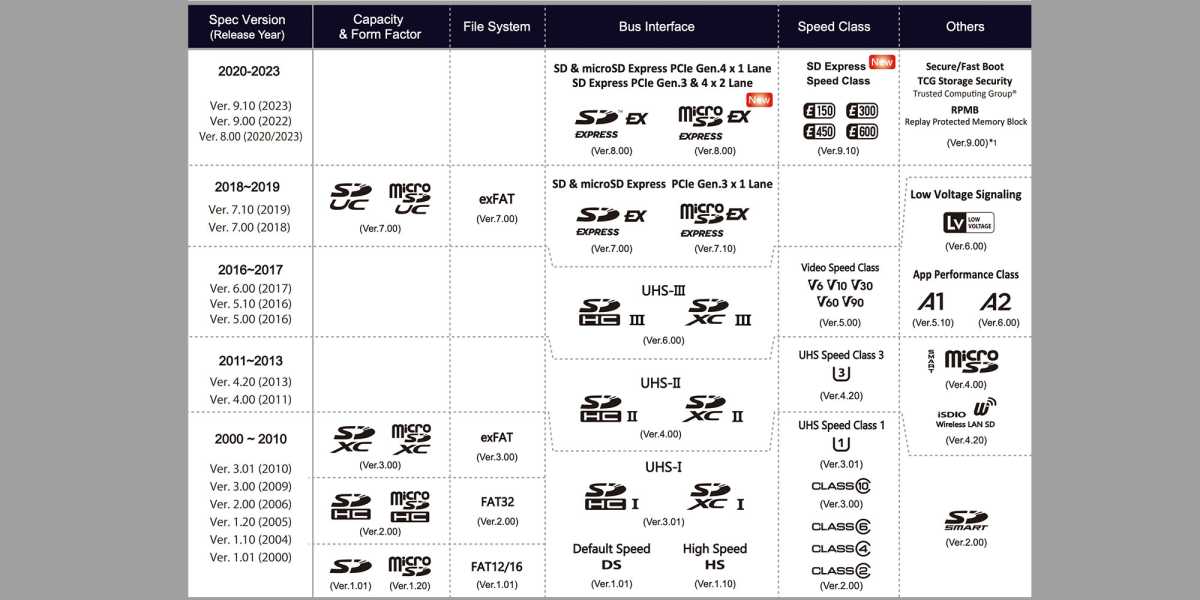The SD Association is responsible for the further development of the SD memory card format. With a new SD Express standard, the transfer speeds for reading and writing to the small cards are to increase significantly. Specifically, SD Express version 9.1 stipulates that the memory cards must be connected via PCI Express 4.0 x1.
That change will double the speed of SD cards, which saw their most recent shakeup when the microSD Express standard debuted in February 2019.
Up to 2GB per second possible
The change to PCI Express 4.0 x1 increases the speed to a maximum of 1,969 megabytes per second. The previous connection with PCI-Express 3.0 x1 limited the speed to about 985 megabytes per second.
Buyers can identify the new SD cards by the “SD Express Speed Class” marking. In the future, there are also plans for a class that will use PCI Express 4.0 x2 and thus reach almost 4 gigabytes per second.
Further reading: How long does data last on an SD card?
Speed Class 150 to 600

SD Association
Also new are four memory classes for already available SD card formats: The four classes (SD Express Speed Class 150, Speed Class 300, Speed Class 450, and Speed Class 600) provide information on the respective achievable speed in megabytes per second, both for reading and writing. This classification should make it easier for buyers to find the SD card they need for their device.
Standard still a long time coming
The new SD Express 9.1 standard also includes features that are supposed to better control power management and waste heat. This requires devices that keep an eye on the behavior of the SD cards and throttle the speed if too much heat is generated, however. It remains unclear when the first devices and cards with SD Express 9.1 will go on sale — but they’re coming.
This article was translated from German to English and originally appeared on pcwelt.de.




